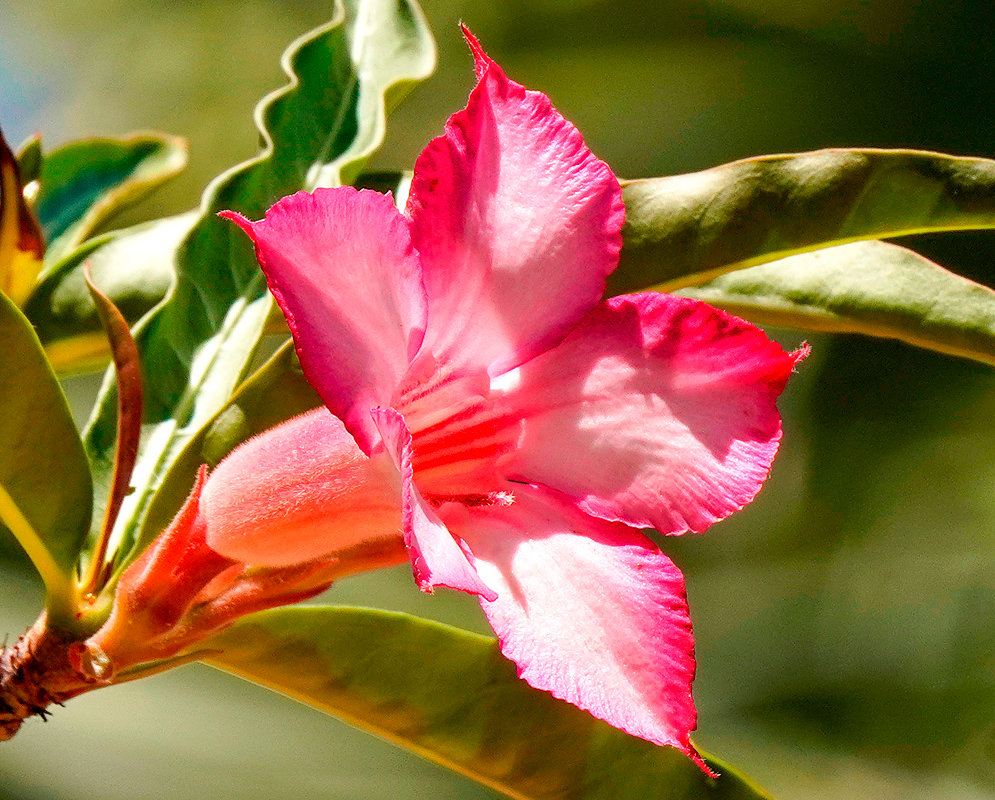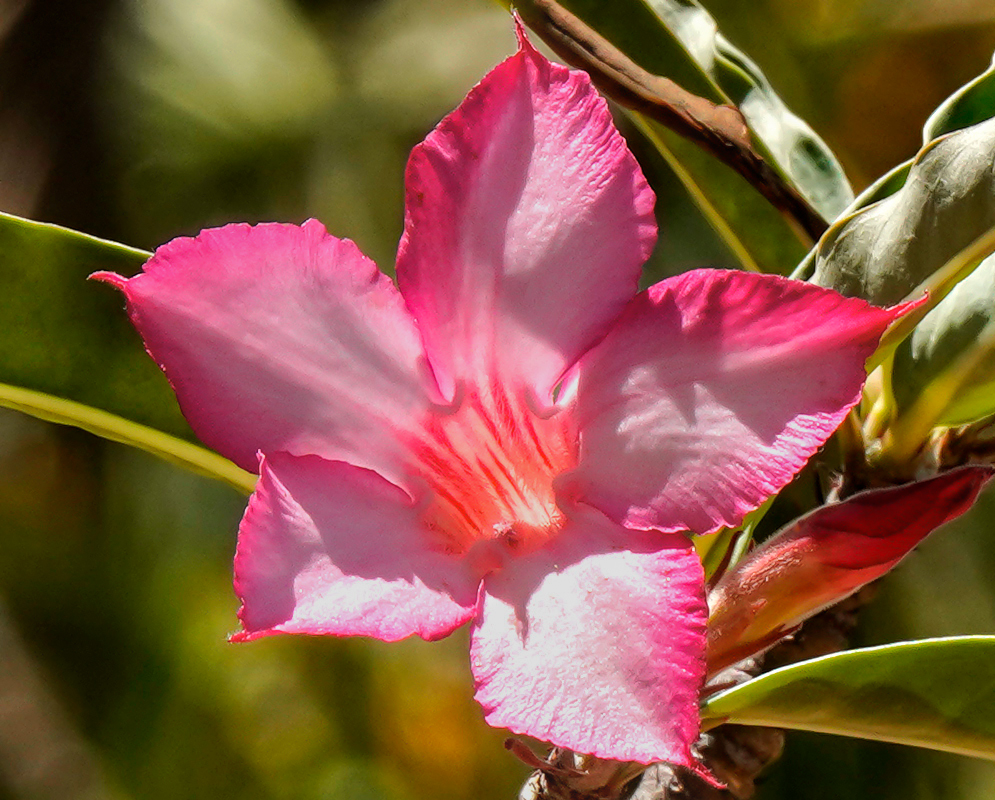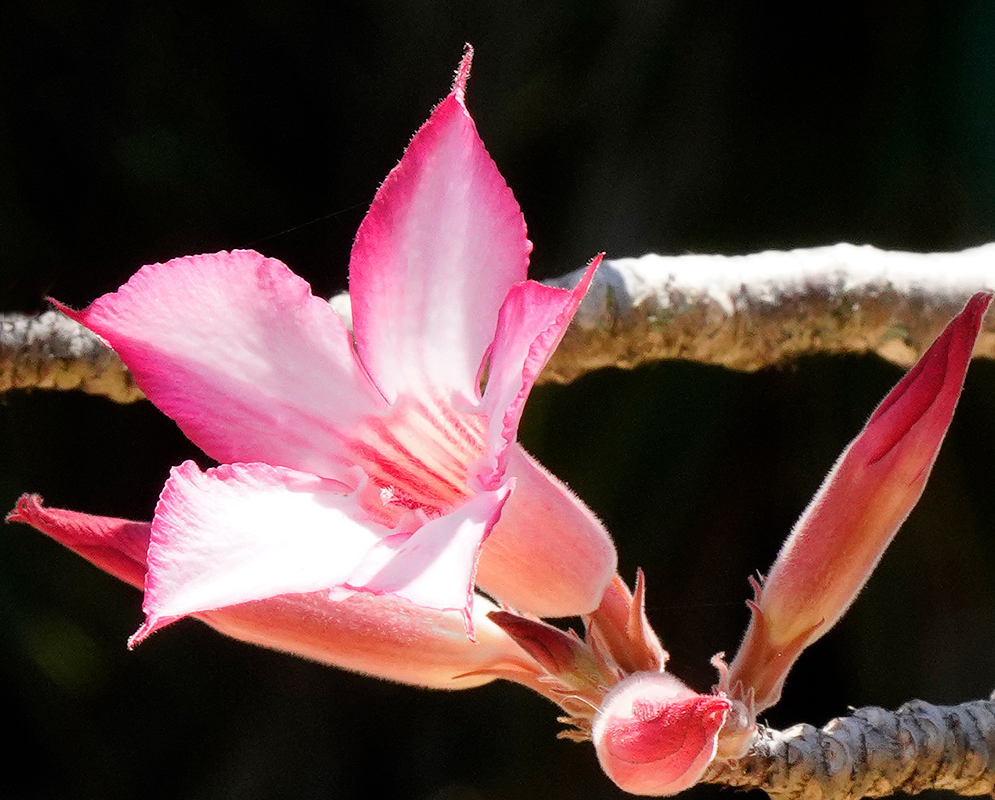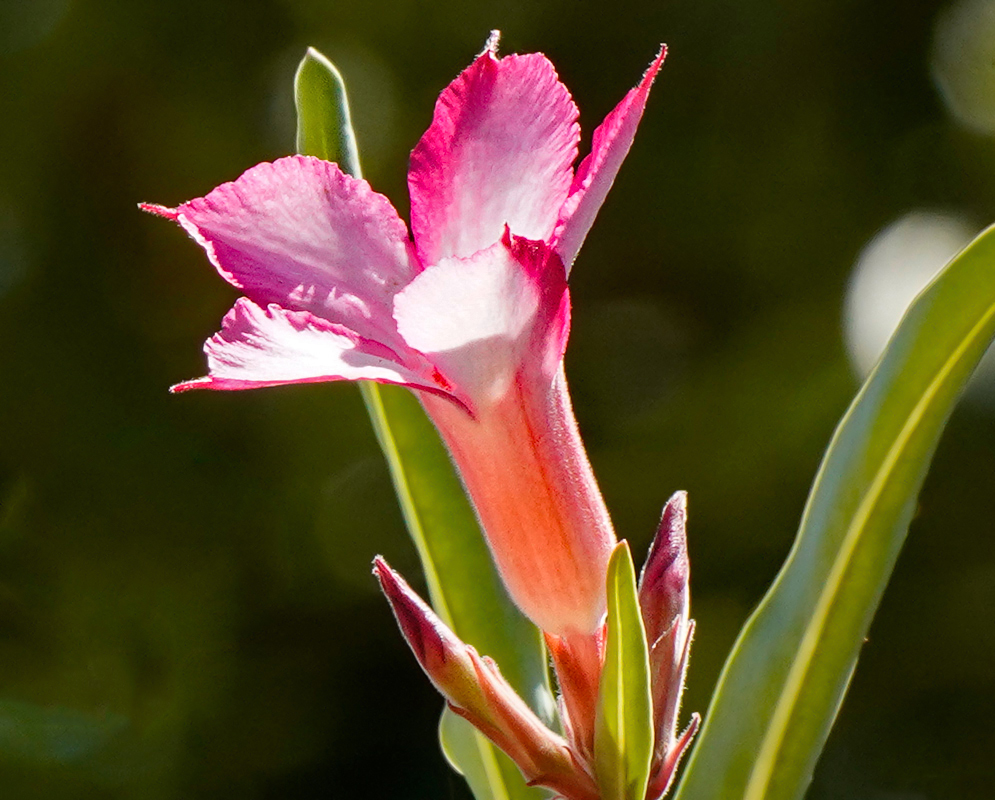This post has 11 Simple Fields-fields attached. Show fields.

Adenium somalense originates from the arid regions of eastern Africa, particularly Somalia, Kenya, and Tanzania. Adapted to withstand drought, this succulent shrub or small tree typically reaches 6 to 10 feet in height and develops a prominent swollen base, or caudex, which stores water and gives the plant its distinctive appearance. It thrives in rocky, well-drained soils and is well-suited to hot, dry climates where it can survive with minimal water. The plant produces tubular flowers that range in shades of pink, red, and white, blooming prolifically in warm months. Photographed in central Florida.
In traditional medicine, extracts from the plant have been used locally in East Africa for treating various ailments, though it contains toxic compounds and is not suitable for ingestion. Care should be taken when handling it, as the sap is poisonous if ingested or if it comes into contact with open skin wounds. Hybrid varieties are available that have been selectively bred for flower color and caudex form, making this species a popular choice for plant enthusiasts interested in rare and visually striking specimens. Adenium somalense is not considered endangered and is widely available in specialized nurseries.







